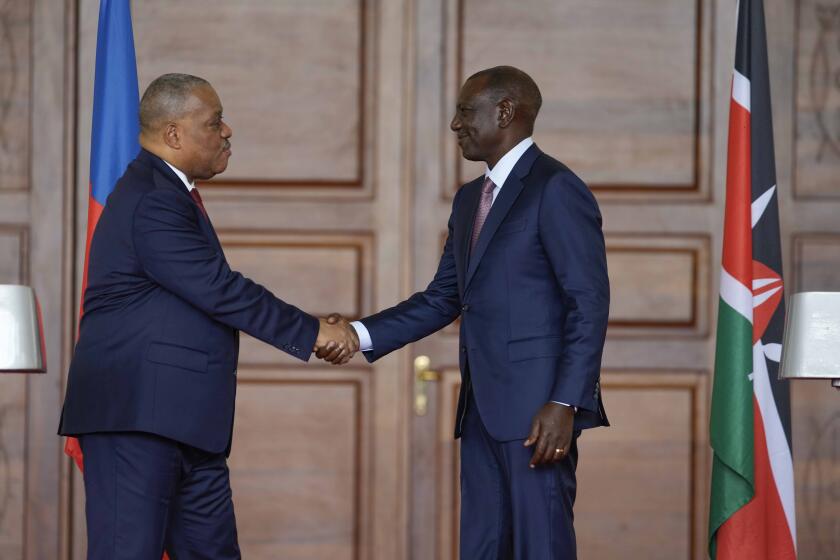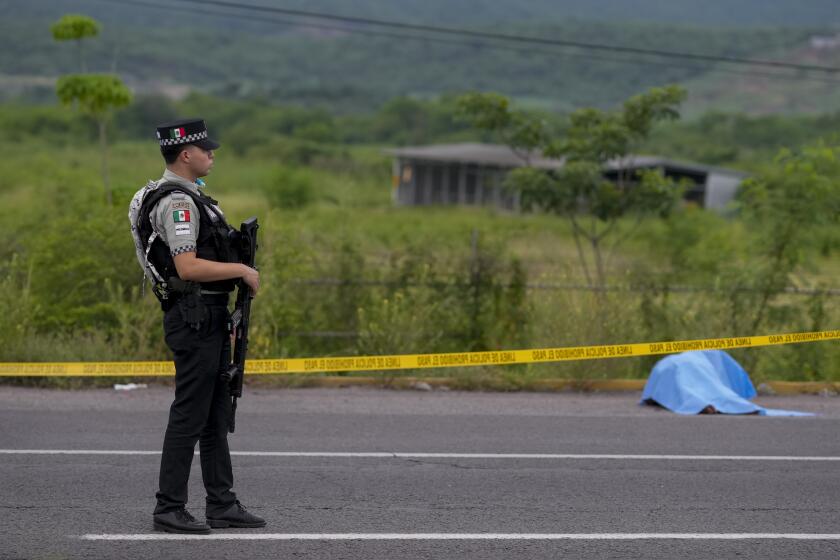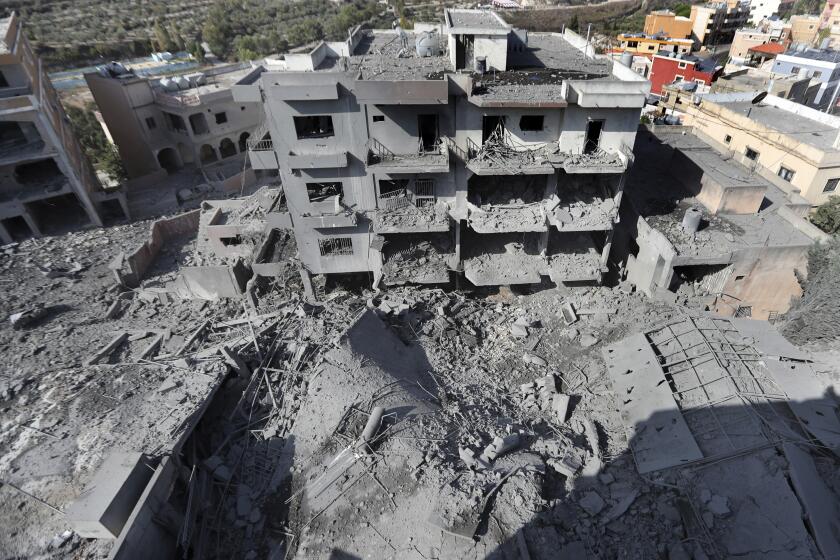Pakistan, India Nuclear Claims Called Inflated
In a game of nuclear bluff, both India and Pakistan exaggerated the number and size of the nuclear weapons each nation detonated earlier this year, overstating the power of the atomic bombs by a factor of four, according to the first independent scientific accounting of the controversial tests.
Two of the five nuclear explosions announced by the Indian government may never have taken place, the analysis released today concluded. Only two in the series of nuclear tests that the Pakistan government announced actually involved real nuclear explosions, according to the study. At different times Pakistani officials have claimed up to seven devices were tested.
“This is quite clearly a case where governments tested for a political reason rather than scientific reasons, so we have to be suspicious of what they say,” said Terry Wallace, a noted authority at the University of Arizona on the use of seismology to analyze nuclear explosions.
His research, published today in Seismological Research Letters, is based on a detailed study of the seismic shock waves released by the nuclear explosions. He concludes that both governments misled each other--and the international community--about the nuclear tests conducted last spring.
“Seismology provided a microscope into what happened and we were able to learn a lot about these explosions,” Wallace said. “It has given us a reality check on government pronouncements and counterclaims.”
In Washington, the independent seismologic research was viewed as corroborating evidence by Clinton administration officials who have harbored doubts for some time about the scope of the nuclear tests conducted by India and Pakistan.
“We were suspicious from the beginning about the claims by both countries,” said one State Department official who requested anonymity.
At the same time, the fact that the Indians and Pakistanis apparently exaggerated their characterizations of the tests does not lessen the need for the United States to respond to a regional arms race with global implications, in the administration’s view.
“We won’t argue with experts like these about the number of tests,” the State Department official said. “What is important to us is that there were tests by both sides. That’s the issue we’re trying to deal with.”
The administration already had expressed skepticism about the Indian and Pakistani claims. Asked by a member of Congress how many nuclear devices had been tested, Assistant Secretary of State Rick Inderfurth testified on June 3: “Less than they said. The precise numbers are still being looked at.”
Experts at Los Alamos National Laboratory, Princeton University and the Incorporated Research Institutions for Seismology, a consortium of 90 research universities that operates a global network of 100 seismic monitoring stations, endorsed the new study’s conclusions about the nuclear blasts in India and Pakistan.
“Essentially my view and the view of my colleagues here is that it is well-grounded work,” said geophysicist Hans Hartse at Los Alamos in New Mexico. “We find it all perfectly acceptable and tend to be in agreement.”
At Princeton, physicist Frank von Hippel, who until recently was the assistant director for national security in the White House Office of Science and Technology Policy, said of the Wallace study: “It seems pretty convincing to me.”
The barrage of nuclear explosions in India and Pakistan, which galvanized world attention last spring, was also an unexpected trial of an international scientific network created to detect and characterize clandestine nuclear explosions.
To keep track of nuclear tests, the United States for decades has relied on a combination of satellites that can monitor test sites, airborne sensors that can detect radioactive isotopes in the atmosphere, and seismic instruments that can record the underground energy released by a nuclear blast. Most often, those assessments are classified.
In recent years, however, university-based seismologists like Wallace and his colleagues have used private networks of seismic sensors, designed to study Earth’s mantle and earthquake activity, to monitor underground nuclear explosions. Their aim is to provide an independent voice in nuclear test ban and treaty monitoring debates.
On May 11, India announced it had detonated a 43-kiloton H-bomb, a 12-kiloton atomic bomb and a 1-kiloton atomic bomb. On May 13, Indian government officials announced that they had detonated two atomic mini-bombs, with a combined yield of 800 tons of explosives.
In response, Pakistan announced its own rounds of nuclear explosions on May 28 and May 30.
The first blasts were said to have a combined yield of 40 to 45 kilotons, with the largest weapon having a yield of 30 to 35 kilotons. The second blast involved a warhead with a yield of 15 to 18 kilotons.
Based on his analysis of data from 22 seismic monitoring stations around the world, Wallace determined that the May 11 explosions in India had a combined force of no more than 15 kilotons, so small that, in his view, it probably involved a less sophisticated fission bomb instead of a thermonuclear H-bomb.
“Conventional wisdom states that 10 to 15 kilotons would be too small to have been a full test of a thermonuclear weapon,” Wallace said.
Seismic Data
There is no seismic evidence that the May 13 nuclear explosions announced by India took place at all.
“Nothing was detected that could have been an explosion,” Wallace reported.
Based on the seismic evidence, Wallace also calculated that the Pakistani explosions involved bombs that totaled only 9 to 12 kilotons in the first round of tests on May 28 and 4 to 6 kilotons in the second on May 30--about one-quarter the power officially announced.
“It is clear that the seismic data we see is not consistent with the claims that are coming out of both countries,” said Gregory van der Vink, director of planning at the seismic monitoring consortium.
“For the first time,” he said, “we have an independent ability to question the validity of their claims.”
While agreeing with the estimates of yield of the explosions, three nuclear testing experts and two U.S. authorities on nuclear weapons design said there was no way, based only on seismic evidence, to determine definitively whether or not India did detonate an H-bomb.
“Seismologically, all we can make is a statement about the yield of an explosion and its location,” said Los Alamos geophysicist Alan Cogbill. “We can’t make an inference about the type of explosion it might have been.”
Physicist Ray E. Kidder, a former weapons designer at the Lawrence Livermore National Laboratory, said that despite the relatively small yield of the Indian blast, it could have been the product of a thermonuclear device. “The seismic people don’t seem to have been sufficiently knowledgeable about weapons capability,” he said.
Times staff writer Robin Wright contributed to this story from Washington.
(BEGIN TEXT OF INFOBOX / INFOGRAPHIC)
Little Bang Theory
A seismographic station in Nilore, Pakistan has captured data on the results of India’s nuclear testing. Though the May 11 recording does not address the yield discrepancy reported Tuesday, it does show that the signature of a nuclear explosion is clearly different from that of an earthquake (bottom reading). The recording for May 13 shows no apparent signal. That means that the nuclear test on May 13 had a combined yield of less than 0.01-0.02 kilotons. The Indian government has claimed a combined yield of 0.8 kilotons.
May 11, 1998: Indian Nuclear Test
May 13, 1998: Indian Nuclear Test
April 4, 1995: Indian Earthquake
Source: IRIS Consortium
More to Read
Sign up for Essential California
The most important California stories and recommendations in your inbox every morning.
You may occasionally receive promotional content from the Los Angeles Times.










